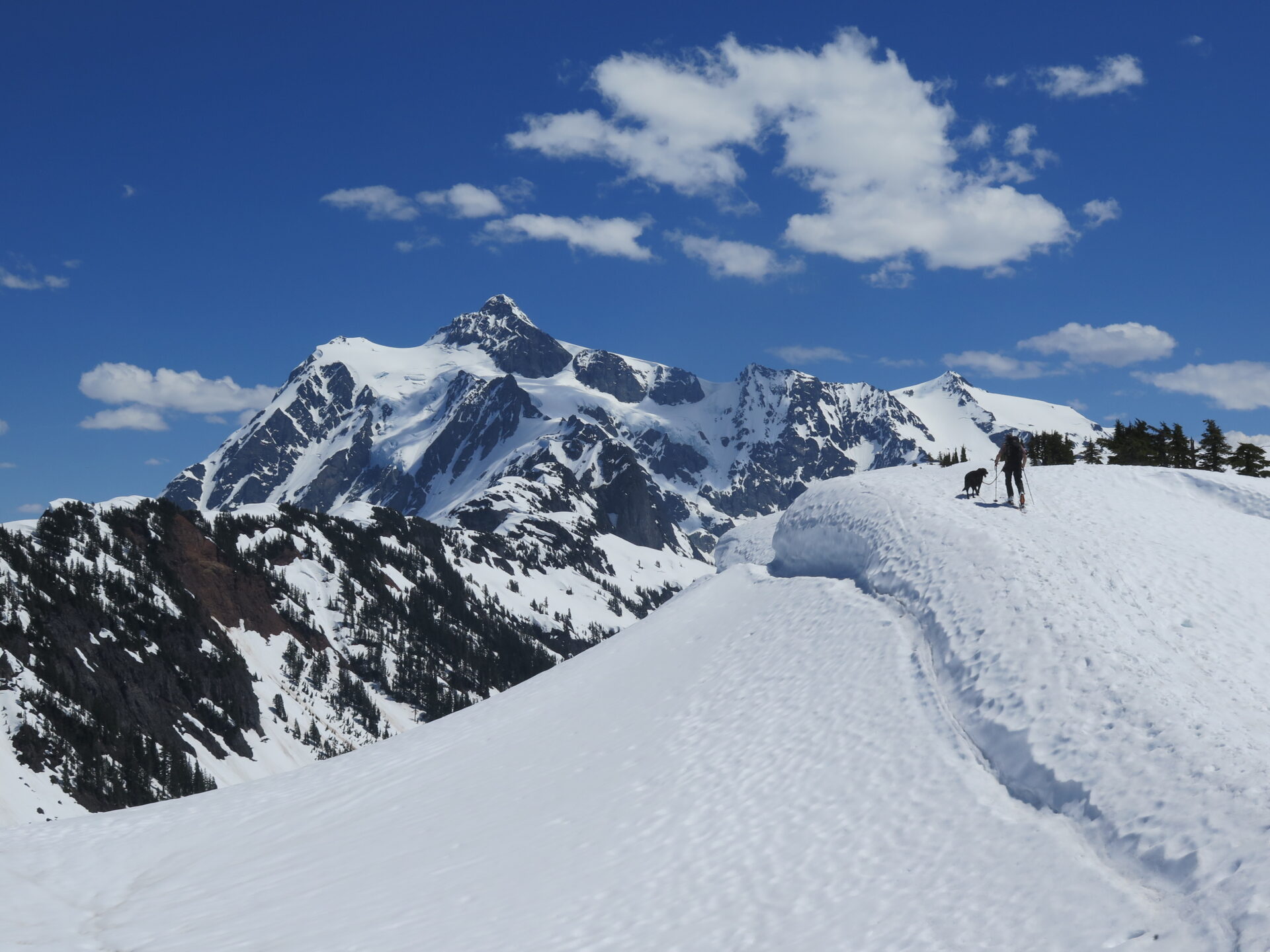When summer transitions to fall, I’m filled with giddy anticipation not only for gorgeous autumn hiking but also for the upcoming snow sports season! In fact, Seattle’s weather took a dramatic turn this past week and many higher elevations got their very first snowfall of the season!
Is backcountry skiing or snowboarding on your list of things to do? Not sure how to start or make the transition from inbounds? Read on for some questions to ask yourself as well as tips to get started.
Note: Although I have several years of inbound snowboarding experience on blue and diamond runs, I took a 4-year break, then bought my splitboard during the 2016 winter season. Even after 2-3 seasons, I consider myself relatively new to backcountry but I’ve already learned a lot that I think can help others who are considering backcountry or who are new to the sport.
1. Am I ready for the backcountry?
There is no shortcut getting to the backcountry. You don’t need to be a “huck off big mountains” Red Bull-sponsored skier who shreds the biggest and most challenging terrain, but you do need to have strong skills.
At the very minimum, to have a safe and fun experience, you should be confident on blue and diamond runs. More importantly, you should be comfortable riding all kinds of terrain (think moguls, crusties, deep powder, etc). If you’re not, you need to beef up your skills and this is a lesson I learned the hard way.
I thought I could jump straight into the backcountry after a several year snowboarding break and I fully admit that my first winter was a disaster! If you’re not a capable, confident skier or snowboarder, you’ll quickly be in over your head and way more frustrated than you need to be.
Exercise some patience and improve your inbound skills first in all kinds of conditions. Trust me, the transition will be safer and a lot more enjoyable!
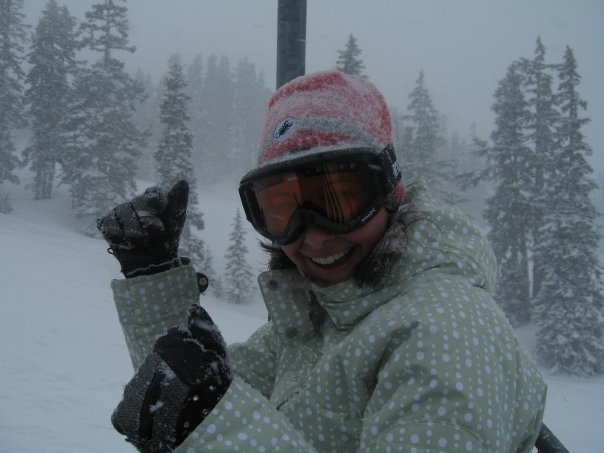
If you think you’re ready, the next question is…
2. Have I taken safety courses?
If backcountry winter travel is in your plans, no matter the method, you should absolutely take an avalanche safety course from an AIARE provider. You’ll learn decision making skills in avalanche terrain that give you the ability to identify dangers, make smart terrain choices, get familiar with safety gear, and learn companion rescue.

More advanced level 2 training teaches you how to evaluate snowpack conditions as well as understand weather forecasts and avalanche release and triggering mechanisms. The Northwest Avalanche Center, dedicated to avalanche forecasting and safety, also has a list of training events on their website.
If you’ve answered yes, I’m ready! And yes, I have the training! Then the next question is…
3. Am I willing to die in the backcountry?
That may seem harsh and dramatic, but if you’re not willing to understand and accept that backcountry winter sports come with high risk, you should stay inbounds. I firmly believe everything in life has risk, even sitting on the couch, but there is real risk with winter terrain whether you’re skiing, snowboarding, snowshoeing, or even on foot. Avalanche fatalities have spiked in the Western U.S. over the last few years, no doubt because of more people flocking to the backcountry.
Keep in mind that we all share responsibility for not just ourselves out there, but also for others. Making careless decisions on the slopes not only puts you at risk but others around you or below you as well as rescuers who may have to venture into dangerous avalanche terrain to help.
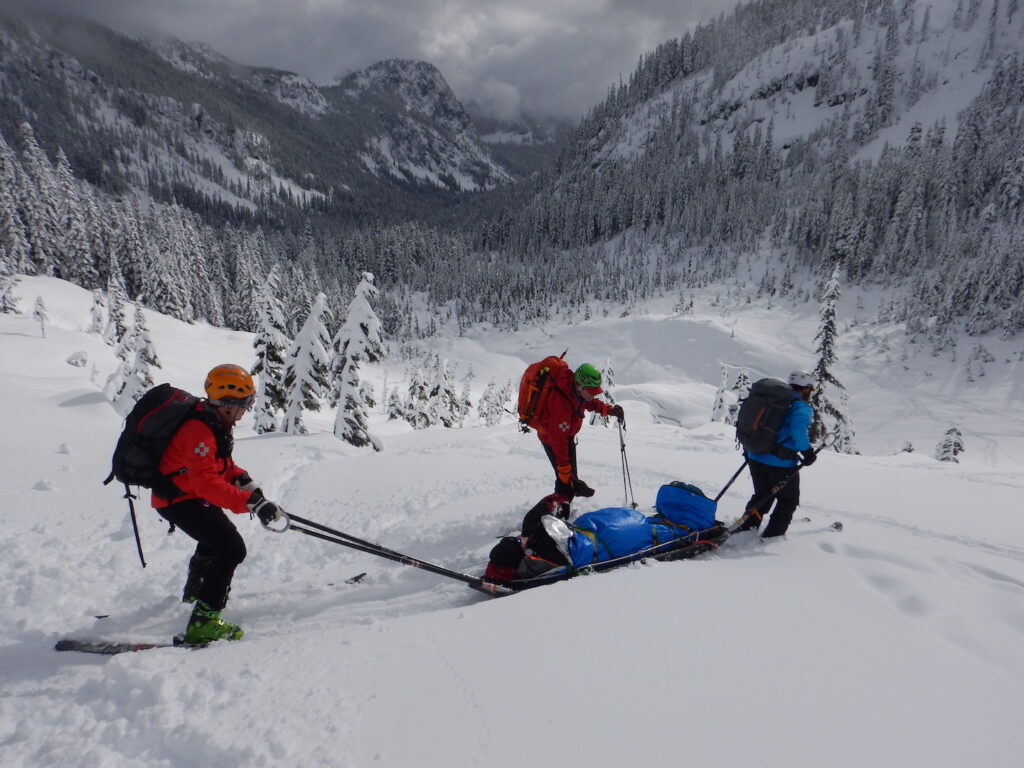
The best way to mitigate risk is to understand it by taking training and learning as much as you can about avalanche safety, conditions, and terrain. Talk to veteran skiers about your local area and ask yourself the following questions:
- Do I know the current snowpack conditions?
- Do I know where the dangerous slopes are?
- Do I know how to avoid the dangerous slopes?
- Do I know what to do if an avalanche happens?
- Do I have rescue equipment and know how to use it?
If you can’t answer these questions, go back to #2 and take your training courses. If you can, think hard about whether you’re willing to die out there.
4. Do I have the proper safety gear?
An avalanche beacon, shovel, and probe will cost you about $400 but it’s the most important investment you can make. These three pieces of gear could save your life or someone else’s, so buy them, carry them, and know how to use them. There’s zero excuse for going into the backcountry without safety gear.
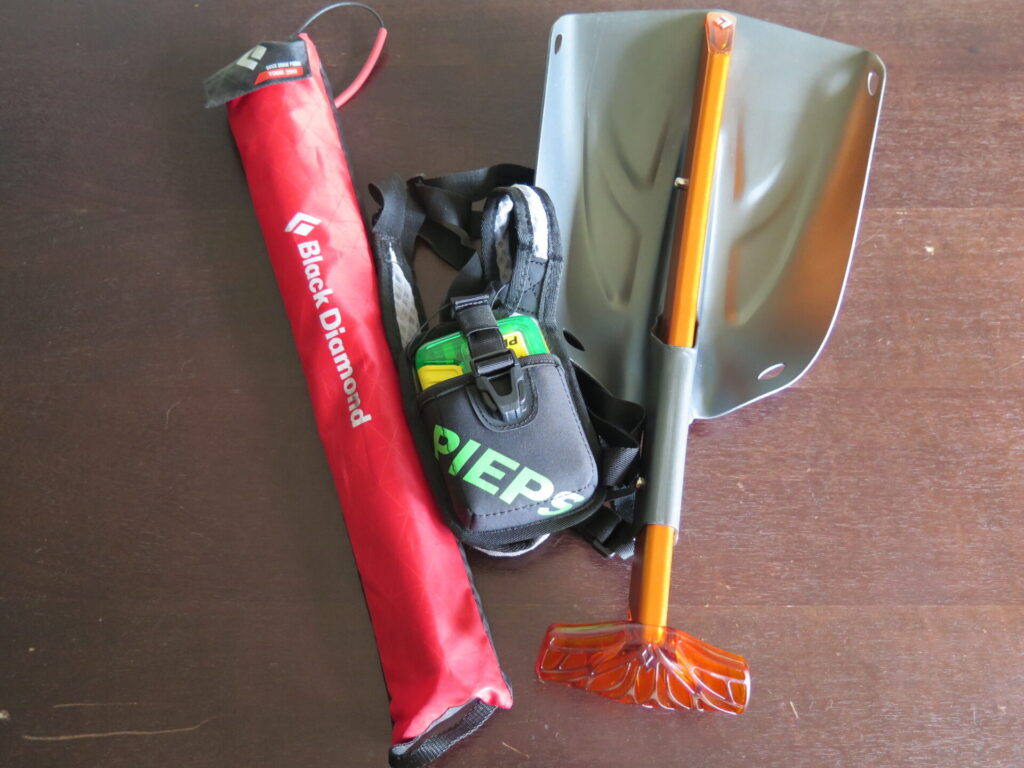
My boyfriend Nick is a veteran skier and backcountry enthusiast as well as a Seattle Mountain Rescue volunteer. Our first outing was conditional on me demonstrating my beacon skills. Even though I thought using one would be straight-forward, it took some practice to be efficient. If you’ve already taken training and know how to use your gear, consider practicing before the start of every season if for no other reason than to make sure your batteries are fresh and your equipment is functioning as expected.
The Summit at Snoqualmie has a beacon training park called B.A.R.K. Beacon Basin. You can simulate searches for up to 4 ‘victims’ with 3 settings that vary from easy to difficult. Beacon Basin is sponsored by Alpental B.A.R.K., a local non-profit dedicated to the support and training of Avalanche Dogs used in avalanche search and rescue, as well as generally supporting avalanche education.
5. Do I need backcountry-specific gear?
Ah, the next part involves some $$, of course! You can certainly start with your normal alpine skis or snowboard but you’ll need to hike it in or ride in lift-accessible backcountry. You may be able to buy skins and mount touring bindings on your existing skis, but you’ll eventually need to invest in backcountry-specific skis or a splitboard as well as bindings, skins, poles, and probably new boots.
If you’ve decided the risk is acceptable and you’ve got the skills, the training, and all the gear, now what?
Get familiar with your gear.
Backcountry gear has a lot of moving parts, so learn how to use it. For me, changing over my splitboard from tour mode to ride mode and back took a lot of practice and it’s a completely different beast when your gear is coated in ice and you can’t feel anything because you’re on a windy, freezing, snowy slope wearing thick gloves.
With a splitboard, when you finally get to where you want to ride, you need to disconnect from your tour bindings, collapse your poles, not launch your splitboard down the mountain, rip your skins (it’s always windy, trust me!), get your skins tucked into your pack, remove your bindings, snap your board together, reattach your bindings in ride mode, make sure the highback forward-lean adjuster is properly in place, then get strapped back into your board.
Most of the time, you won’t be doing this on a flat patch of snow and I guarantee your board will be coated in an icy crust which makes the whole thing a lot harder than in your living room. It takes both time and practice on the slopes to get efficient.

Practice, practice, practice! Then go to the parking lot of your local ski resort and practice some more. Then when you can do it all comfortably, skin 1/4 mile up a snowy slope and do it again. It doesn’t sound like fun, but I guarantee it’s way easier to learn in a controlled environment. You’ll eventually get faster and you’ll thank yourself later!
What to wear.
Layers are key for all outdoor adventuring but since I started alpine touring it’s apparent just how important they really are. I’ve discovered that backcountry splitboarding really means 90% touring and 10% riding. Nearly every time I start skinning, no matter the temperature, within 5 minutes I’m down to a single long-sleeve layer, mumbling about how I wish my ski pants had ventilation. You will be so warm on the climb that if you overlayer, you’ll quickly sweat through everything and freeze to death at the top.
For touring, I usually wear a medium-weight long-sleeve layer, some tights under my ski pants, and a light- or medium-weight pair of gloves. I highly recommend zippered, ventilated ski pants. I keep my puffy or my hardshell handy in my pack in case we stop and I need extra layers quickly.
In my pack I carry a Craft thermal windbreaker shirt, a North Face PrimaLoft vest, a Patagonia puffy, a Patagonia Refugitive hardshell, a polar reversible Buff, beanie, and Dakine Camino mittens.

Just a tip: bring liner gloves that you can wear underneath warmer ones. Wearing thin gloves means you can change over your board without exposing your hands to the weather and still keep them a little bit insulated. I bring several pairs of gloves because they tend to get wet and my hands have a rough time with the cold.
What to bring in your pack.
You’ll likely need at least a 30+ liter pack for backcountry outings, depending on the weather and your clothing choices. You’ll need extra room in your pack for your skins on the way down and if you’re a snowboarder, your poles as well.
In addition to fitting my extra clothing layers, I pack food, the standard first-aid kit, a shovel, probe and extra batteries for my beacon. Hydration bladders are usually no good for touring because they’ll freeze in no time, so bring regular Nalgene bottles and make sure they’re securely attached to your pack so they don’t careening down the slope. Don’t forget your sunscreen, lip balm, regular sun glasses, and ski goggles. Regular sunglasses are nice for the skin up. Goggles better for the run down.
Remember that in the backcountry you’re on your own. If things go wrong, you can’t simply find the nearest cat track or easily slide your way down the groomed green run. Equipment malfunction? Better fix it or you’re in for a long, if not impossible slog down. Consider packing a small multi tool and spare binding parts.
The first time I toured at Mount Rainier I got above Paradise, excited to take my run down, then realized the night before I had incorrectly adjusted my binding mounts and not tested them! I wasn’t able to get my snowboard into ride mode and since I didn’t have a tool with me to make the adjustment, I was stuck awkwardly skiing down on my skins. It was a huge bummer, but luckily I wasn’t that far from the parking lot. I learned my lesson on that one.
Who to go with.
Whether you’re new or experienced, pick a competent partner. If you’re a veteran, you shouldn’t take any newbie into the backcountry unless they have the proper safety gear and training. If you’re the newbie, you shouldn’t be going out without safety gear no matter who your partners are.

I’m a huge fan of solo hiking and backpacking, but I don’t go it alone on backcountry slopes. I know many who do solo snow outings and I don’t judge anyone for making decisions about their own acceptable level of risk, but not having a partner in the backcountry is extremely risky business. All you have to do is read a handful of NWAC accident reports to understand that without a partner, you’ve eliminated any safety net should something go wrong.
Where to go.
Start small and explore slowly. One of the best places to start is your local ski hill. Each one has different policies on uphill travel and skinning, so check their website for rules and if in doubt, call them and ask. Hyak at Snoqualmie Pass is a popular place for backcountry skiers and boarders and the Summit allows uphill travel so long as you stay off the main runs and obey their policies.
Early in the season before Snoqualmie opens, I go up to West, where the terrain is easy and gentle, and I take some runs to refresh my skills and test my gear. It only takes a handful of careless people to ruin it for everyone, so again, please check ski area policies on uphill travel or talk to ski patrol on site.
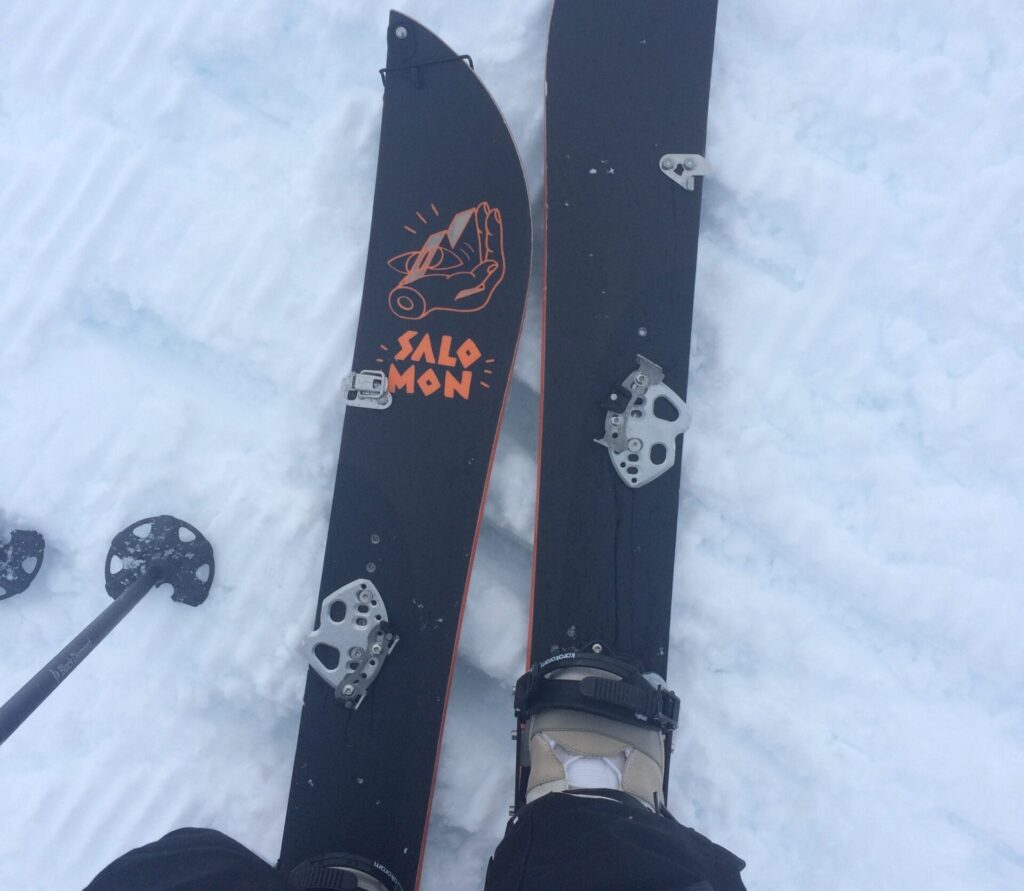
Mount Rainier is a beautiful place to go touring and the rangers there provide good information if you’re new to the area. Paradise offers some moderate slopes that are wonderful for beginners as well as more advanced terrain for experts. Always check avalanche conditions—terrain there can be dangerous. My favorite outings so far have been at Rainier and if I never do anything more challenging, I am completely ok with that!

Alpine Lakes High Camp (formerly Scottish Lakes) outside Leavenworth is under new ownership and makes a fantastic weekend backcountry getaway. They offer primitive cabins and a fun car or snowmobile ride to the property. Once there, you’ll have a wide range of trails that accommodate both beginners and advanced backcountry enthusiasts.
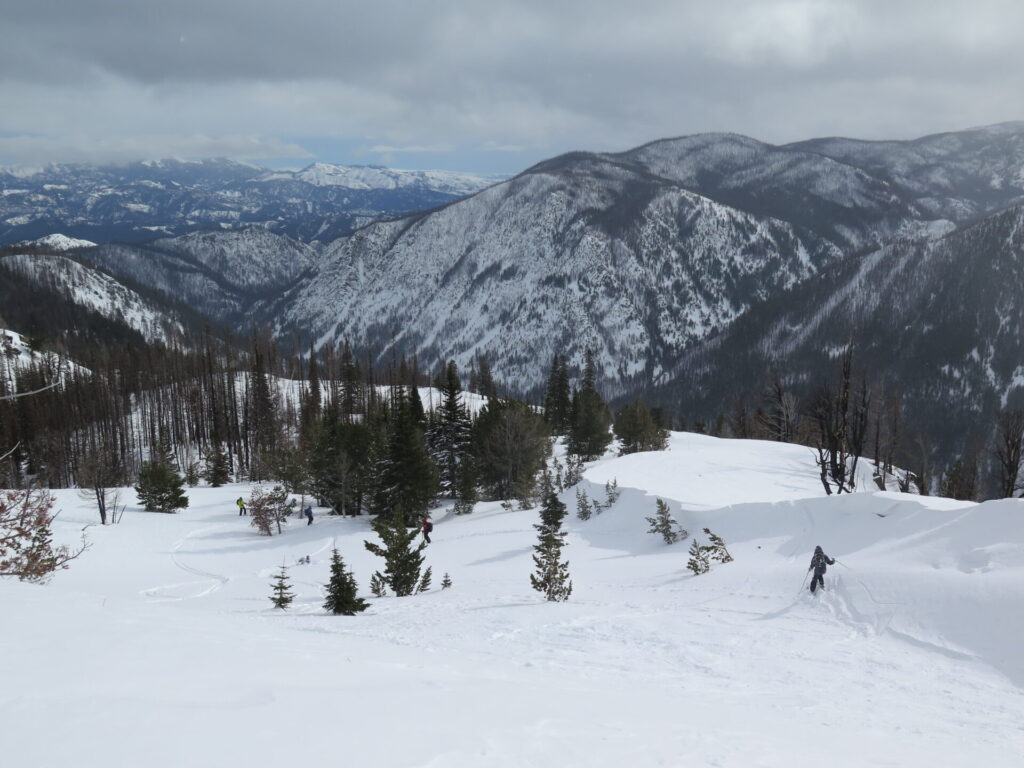
Final notes.
I know it sounds dire, but despite your best intentions, training, and precautions, avalanches happen. They can happen in an area where others passed through safely just minutes or hours earlier. They can happen to veterans with decades of experience. No matter how skilled, educated, and prepared you are, you can still die in the backcountry.
If you’ve taken the training and have the gear, ask yourself again if you’re willing to accept the risk.
If you are, always ski with a partner, start small and take it slow. If you have aspirations to get out but don’t have the skills, dedicate this winter to taking lessons and getting better.
All that being said, I thoroughly enjoy being able to tour, even though I’m not a big mountain snowboarder. Even if it’s just simple, easy slopes, there’s something I enjoy about moving around on my own power. This winter; however, I’ll be working on my skills so I can be that much better!

Additional resources.
- Avalanche Basics How to use your avalance probe, shovel, and snow saw from MSR.
- NWAC provides mountain weather and avalanche information for the Northwest US, including the Washington Cascades, Olympic Mountains and northern Oregon. They also provide detailed accident reports, which are both sobering and educational.
- AIARE training information and courses
- Turns All Year is a great resource for trip reports, terrain information, and finding ski partners.
- Know When to Bail. A friend who is an east-coast AIARE instructor shared this article a few years ago and it stuck with me.
Check out these upcoming Seattle events for more information:
